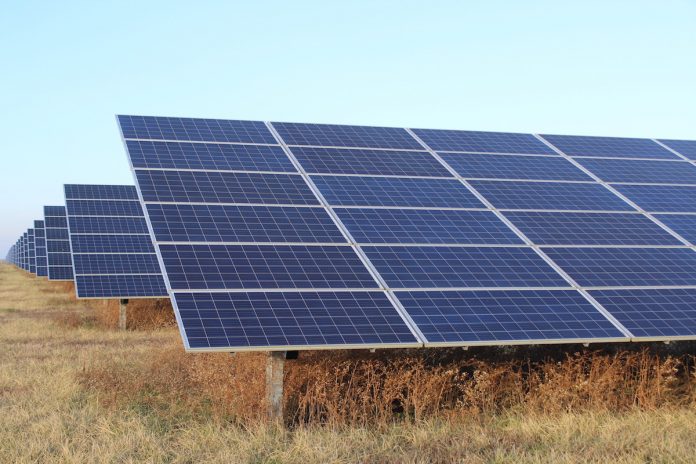The U.S. Department of Energy announced an ambitious new target last month to cut the cost of solar energy by 60% within the next decade.
To accomplish this goal, it’s throwing nearly $128 million at research projects and business development to lower costs, improve performance and speed the deployment of solar energy technologies.
“In many parts of the country, solar is already cheaper than coal and other fossil fuels, and with more innovation we can cut the cost again by more than half within the decade,” said Energy Secretary Jennifer M. Granholm, in a statement.
To reach President Joe Biden’s goal of having a 100% clean energy grid in the next 15 years, hundreds of gigawatts of solar energy need to be installed as much as five times faster than it is now, according to the Department of Energy.
The International Energy Agency found in its 2020 World Energy Outlook that solar photovoltaic systems are now consistently cheaper than new coal- or gas-fired power plants in most countries. The DOE set a goal of driving down the current utility-scale solar energy cost of 4.6 cents per kilowatt-hour to 3 cents per kilowatt-hour by 2025 and 2 cents per kilowatt-hour by 2030.
Funding announced through the Department of Energy’s Solar Energy Technologies Office, or SETO, will support advancing two materials used to make solar cells: perovskites and cadmium telluride (CdTe) thin films.
- $40 million for perovskite R&D: Perovskites are a family of emerging solar materials that have potential to make highly efficient thin-film solar cells with very low production costs. DOE is awarding $40 million to 22 projects that will advance perovskite PV device and manufacturing research and development—as well as performance through the formation of a new $14 million testing center to provide neutral, independent validation of the performance of new perovskite devices.
- $3 million Perovskite Startup Prize: This new prize competition will speed entrepreneurs’ path to commercializing perovskite technologies by providing seed capital for their newly formed companies.
- $20 million for CdTe thin films: The National Renewable Energy Laboratory will set up a consortium to advance cheaper CdTe thin-film solar technologies, which were developed in the U.S. and make up 20% of the modules installed in this country.
In addition, the DOE announced $7 million as part of a new funding opportunity for projects to increase the lifetime of silicon-based PV systems from about 30 years to 50 years to lower the cost of energy and reduce waste. The aim is to improve PV system components, such as inverters, connectors, cables, racks and trackers.
About $58 million is also going towards several concentrating solar-thermal power, or CSP, projects. Unlike PV technologies that directly convert sunlight into electricity, CSP captures heat from sunlight and uses that thermal energy to spin a turbine or power an engine that then generates electricity.
Related content
Report: US solar capacity expected to quadruple by 2030
PSU Extension webinar set to look at issues with utility-scale solar projects










